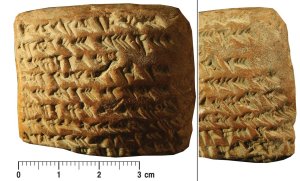Simanaitis Says
On cars, old, new and future; science & technology; vintage airplanes, computer flight simulation of them; Sherlockiana; our English language; travel; and other stuff
BABYLONIAN CALCULUS?
IT’S RARE THAT calculus makes the cover of Science, the weekly magazine of the American Association for the Advancement of Science. Nor is ancient Babylon an expected Science cover subject. However, both are embodied in “Jupiter Rising,” Science, January 29, 2016.
Some background: Speed x time = distance. For example, go 40 mph for two hours and the distance traveled is 80 miles. But what if the speed changes, say, with acceleration from a standstill to 100 mph? This is where calculus, the mathematics of change, is useful. Here’s an example of changing speed, from the June 1975 R&T road test of a Ferrari Berlinetta Boxer.
Bringing Babylonians into this (no, they didn’t drive Ferrari Berlinetta Boxers), I note that recent research reveals that they understood the fundamentals of calculus some two millennia before Isaac Newton and Gottfried Leibnitz formalized its concepts in the late 1600s.
Astronomers in Babylon used their technique to plot the orbit of Jupiter, this planet associated with Marduk, patron deity of the city. They preserved their work in cuneiform script on clay tablets, dating from 350 B.C. to 50 B.C.

Marduk, the patron god of Babylon, was associated with Jupiter. This and other Babylonian images from Science, January 29, 2016.
Astroarcheologist (now there’s a calling!) Mathieu Ossendrijver of Berlin’s Humboldt University studied the Babylonian cuneiform script—and discovered their technique for computing the motion of Jupiter.
It turned out to be an ancient analog of the calculus exercise which follows. Let’s begin with the “40 mph for two hours” example cited earlier. A dimensional analysis, which considers solely the units, yields “miles/hour x hour = miles,” (that is, the hour units cancel out algebraically).
Quantitatively, this translates into a calculation of area under the mph “curve,” (which, at a constant 40 mph, is a straight line).
Next, let’s bring the Berlinetta Boxer’s changing speed into our thinking. How to calculate the area under the curve now that it’s a non-trivial curve?
Those who have been exposed to calculus recognize this as an exercise in integration. And, just as Newton, Leibnitz and other natural philosophers reasoned, this area could be calculated through successively finer approximations of trapezoidal shapes. And this is exactly what Ossendrijver deciphered the Babylonians doing.
Ossendrijver describes their approach in “Ancient Babylonian Astronomers Calculated Jupiter’s Position from the Area under a Time-Velocity Graph.”

AAAS Science video highlights Ossendrijver’s findings.
AAAS reporter Ron Cowen summarizes the paper in “Ancient Babylonians Took First Steps to Calculus,” in the same January 29, 2016, Science. Cowen quotes historian Alexander Jones of New York University, who said learning about these ancient astronomers “would tell us something about why human beings do science in the first place, and from time to time do it very well indeed.” ds
© Dennis Simanaitis, SimanaitisSays.com, 2016






Wow! Thank you Dr.D (ok: Dr.S, if you must) Yet another subscription I must consider.